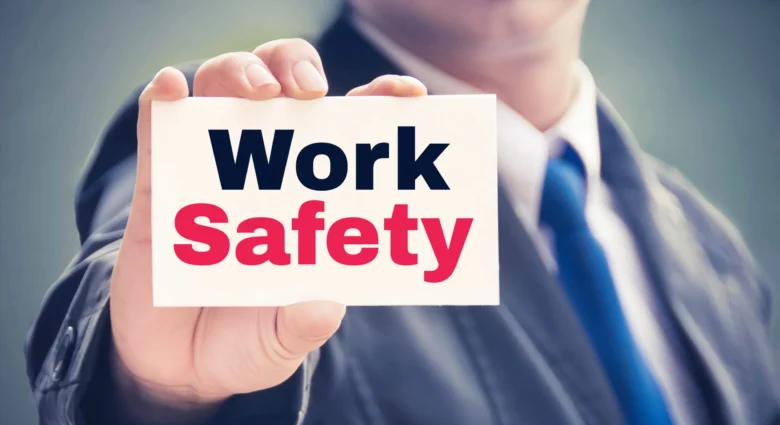Workplace safety is important to keep your workplace healthy, efficient, and productive. Identifying and stopping workplace safety hazards is an important part of keeping your employees safe and your business running smoothly. This article discusses common safety hazards, how they occur, and how to prevent them.
1. Understand Workplace Safety Hazards
Identifying workplace safety hazards is the most important task in ensuring employee safety and preventing accidents. Danger can come from many sources, including the environment, equipment, methods, and even the way people behave. Conducting regular safety inspections is a common way to identify potential hazards. During these inspections, we check the workplace for potential hazards, such as protruding electrical wires, inadequate air circulation, or uneven floors. Employees should be involved in the identification process, as they are often the first to notice when something is unsafe.
Reviewing accident reports and near misses is another good approach. By reviewing these reports, you can identify patterns and understand where your security needs to be improved. Soliciting employee feedback through safety surveys or suggestion boxes can also provide useful information about potential hazards that may not be obvious at first.
2. Prevent Workplace Safety Hazards
Workplace safety hazards can be prevented by taking proactive steps to reduce risks and make the workplace safer. Having and following comprehensive safety rules and guidelines is one of the most important ways to prevent accidents. These rules should cover many workplace safety issues, such as the use of personal protective equipment (PPE), what to do in an emergency, and how to safely handle hazardous materials.
Clear communication is key to preventing safety hazards. By ensuring that all employees understand safety rules and procedures, they understand what needs to be done to keep the entire workplace safe. Regular safety briefings and meetings can help employees remember safety information and allow them to ask questions or raise concerns.
Maintenance and cleanup are important parts of ensuring safety. Regular maintenance of machinery and equipment helps prevent breakdowns that can lead to accidents. Having a regular cleaning schedule keeps the workplace free of clutter, confusion, and other things that can be dangerous. Proper placement not only makes the workplace safer but also reduces the risk of accidents and injuries.
3. Dealing with Specific Types of Hazards
Depending on the industry and the type of work, each workplace can have its unique safety hazards. For example, a manufacturing plant may have hazards related to machinery, and an office may have issues with the way people sit and work. Addressing these specific hazards requires specific approaches. In the workplace, accidents can be prevented by receiving proper training on the use and maintenance of equipment. Installing safety devices and other devices on machinery can help protect workers from moving parts and other mechanical hazards. Regular inspection and maintenance keep equipment in safe operating condition.
To combat ergonomic hazards in your office, provide adjustable furniture, good lighting, and instructions for setting up safe workstations. Musculoskeletal disorders and other related problems can be prevented by telling employees to rest and stand upright. When working with hazardous materials in a laboratory or on a construction site, it is important to follow proper methods for handling and storing them. Providing employees with the proper personal protective equipment, such as masks, gloves, and safety glasses, can help them avoid exposure to hazardous materials. Use clear labeling and storage rules to ensure that hazardous materials are handled safely.
4. Keep Improving and Changing
Preventing workplace safety hazards is an ongoing process that requires improvement and change over time. Regularly reviewing and updating safety policies and procedures can help address emerging risks and improve best practices. A safer workplace can also be achieved by keeping up with changes in safety technology and industry trends. A culture of continuous improvement can be created by encouraging open communication about safety issues and ideas for improving situations. Employees should not be afraid to report hazards and provide feedback without fear of punishment. Establishing a structured way to investigate and address safety issues ensures that they are dealt with promptly.
Conclusion
Identifying and preventing workplace safety hazards is important for ensuring a safe and efficient workplace. Companies can reduce risks and keep employees safe by conducting regular safety inspections, involving employees in identifying hazards, and developing effective prevention plans. Key components of a strong safety plan include developing detailed safety rules, maintaining equipment in good working order, practicing emergency preparedness, and addressing specific hazards. Safety always comes first, and businesses will continue to improve and adapt to new situations. Companies can improve employee health and safety and promote overall business success by fostering a safety culture and making hazard prevention a high priority.
FAQs
1. What are common workplace safety hazards?
Physical workplace hazards include things like broken machinery or uneven floors, ergonomic hazards (such as improper workstation setup), chemical hazards (such as exposure to harmful substances), biological hazards (such as bacteria or viruses), and environmental hazards (such as high temperatures or inadequate air circulation). Regular inspections and employee feedback are required to detect these hazards.
2. What can employees do to make the workplace safer?
Workplace safety can be improved when employees proactively seek out and report hazards, follow established safety procedures, receive safety training, and wear personal protective equipment (PPE) as directed. Attending safety meetings and providing feedback on potential hazards are two other ways to make your workplace safer.
3. What is the best way to conduct a safety inspection?
For safety inspections to be effective, they must inspect the entire workplace, including tools, facilities, and work practices. This includes ensuring that safety rules are being followed, identifying potential hazards, and reviewing accident and near-miss reports. Using a checklist and having employees assist with inspections can help ensure that all potential hazards are discovered and addressed.
4. Why is training important for workplace safety?
Training is important for workplace safety because it teaches workers how to recognize and deal with potential hazards, how to use tools safely, and how to handle emergencies. It also ensures that workers know and understand safety rules and procedures. When people receive regular training to maintain high safety standards, accidents are less likely to occur.
5. What steps can companies take to ensure safety compliance?
Companies can ensure compliance with security regulations by adhering to the latest laws and standards, developing comprehensive security policies, and conducting regular audits. Talking to a security expert or attorney can help you figure out how to comply. Accurately documenting safety practices and training can also help demonstrate compliance.




